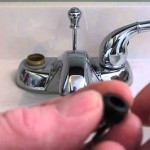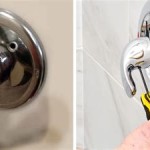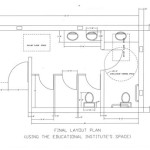Installing a Bathroom Sink Trap: A Step-by-Step Guide
A bathroom sink trap is an essential component of any plumbing system. Its primary function is to prevent sewer gases from entering your home while allowing water to flow freely through the drain. This U-shaped pipe traps water, creating a seal that blocks unpleasant odors and harmful gases. Over time, the trap may need to be replaced due to wear and tear or damage. Installing a new bathroom sink trap is a relatively straightforward DIY project that can be accomplished with the right tools and a bit of patience.
Understanding the Components
Before starting the installation, it's essential to understand the various components of a bathroom sink trap. The trap itself typically consists of a:
- Trap Body: This is the U-shaped pipe that traps water. It may be made of various materials like PVC, ABS, or brass.
- Tailpiece: This short pipe connects the trap body to the drain outlet of the sink.
- Slip Nut: This threaded nut is used to secure the tailpiece to the sink drain.
- Washers: These are placed between the slip nut and the sink drain to create a watertight seal.
- Trap Arm: This pipe connects the trap body to the drainpipe leading to the sewer.
- Cleanout Plug: This removable plug provides access to the trap for cleaning or inspection.
Essential Tools for Installation
To install a bathroom sink trap successfully, gather the following tools:
- Adjustable Wrench: Used to tighten and loosen nuts and fittings.
- Channel-Lock Pliers: Useful for gripping and turning pipes.
- Plumber's Putty: Creates a watertight seal around the drain opening.
- Utility Knife: For cutting pipe and removing old putty.
- Level: Ensures the trap is installed correctly.
- Bucket: For catching any excess water or debris.
- Safety Glasses: Protect your eyes from potential debris.
- Gloves: Protect your hands from cuts and dirt.
Step-by-Step Installation Process
Once you have the necessary tools, follow these steps to install a bathroom sink trap:
- Turn Off the Water Supply: Before starting any plumbing work, shut off the water supply to the sink. Typically, this involves turning a valve located under the sink or near the water meter.
- Disconnect the Old Trap: Using an adjustable wrench, loosen the nuts connecting the old trap to the sink drain and the drainpipe. Once the nuts are loose, carefully remove the old trap.
- Clean the Drain: Remove any debris or buildup from the drain opening and the drainpipe. This ensures a clean and unobstructed flow of water.
- Install the New Trap: Thread the new trap's tailpiece onto the sink drain, ensuring the washer is in place. Use an adjustable wrench to tighten the slip nut securely. Apply plumber's putty around the drain opening to create a watertight seal.
- Connect the Trap Arm: Connect the trap arm to the trap body, ensuring a snug fit. Use a level to ensure the trap and arm are plumb. Tighten the connecting nuts securely with an adjustable wrench.
- Connect to the Drainpipe: Connect the other end of the trap arm to the drainpipe leading to the sewer. Use an adjustable wrench to tighten the connecting nut securely.
- Test for Leaks: Turn the water supply back on and check for any leaks at the connections. If leaks are present, tighten the connections further until the leak stops.
Installing a bathroom sink trap is a simple plumbing project that can be done by most homeowners. By following these steps carefully and using the proper tools, you can ensure a safe, effective, and odor-free bathroom sink.

How To Install P Trap And Bathroom Sink Drain Piping Easy Installation For Beginners

How To Install The P Trap Under A Sink Dummies

Bathroom Sink Plumbing Installation Diy Montreal
How To Install Bathroom Sink Drain Queen Bee Of Honey Dos

How To Connect A Bathroom Sink Drain
How To Install Bathroom Sink Drain Queen Bee Of Honey Dos

How To Install A Pipe From Sink Drain Wall Ehow

Easy Ways To Fix A Leaky Sink Trap 12 Steps With Pictures

How To Install Bathroom Sink Drain Plumbing Replace

Bathroom Sink Plumbing Installation
Related Posts







